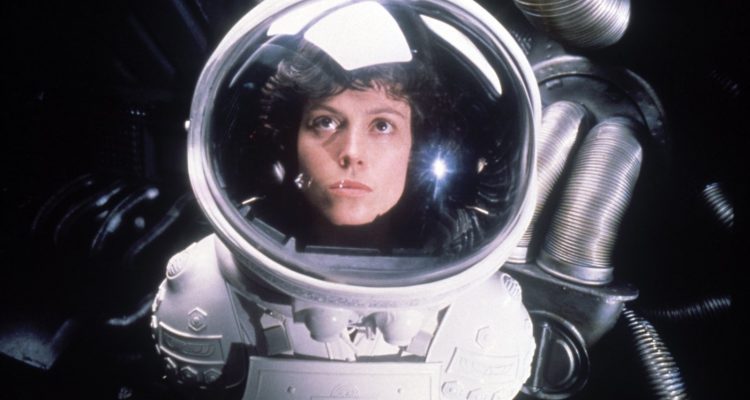 3. Sigourney Weaver beat out Meryl Streep to the role of Ripley, while Jon Finch was originally cast as chestburster victim Kane.
3. Sigourney Weaver beat out Meryl Streep to the role of Ripley, while Jon Finch was originally cast as chestburster victim Kane.
With the script pretty vague on who the targets of the alien would be, Scott had more or less free rein on casting, and decided on a blue-collar, “truckers in space” vibe, to ground it in a real world, and differentiate the film from other horror flicks with a collection of stalwart British and American character actors. Tom Skerritt was one of the first approached, but only came on board when Scott was actually hired to direct, while Harry Dean Stanton had to be convinced that the film was more thriller than sci-fi before he agreed to play Brett. Meanwhile, the director wanted John Hurt to play Kane, the unknowing and unfortunate incubator of the creature, but the actor was already committed to a film that was set to shoot in South Africa around the same time. Jon Finch (Polanski’s “Macbeth,” Hitchcock’s “Frenzy“) was cast in his place, but on the first day of filming, Finch was taken ill — later diagnosed with diabetes and bronchitis. Fortunately, Hurt had been denied access to South Africa, mistaken for staunch anti-apartheid activist John Heard (the film subsequently fell apart), and was now available again. Of course, the key role turned out to be Ripley, and Scott was keen to go for a relative unknown. Veronica Cartwright (“Invasion of the Body Snatchers“) was under the impression when she flew to London that she’d nabbed the part, but in fact she’d been cast as navigator Lambert. Instead, Scott was still trying to pick between Sigourney Weaver and Meryl Streep, who was about to break out in “The Deer Hunter.” In the end, Scott went with Weaver, and obviously, Ms. Streep was never heard from again…
 4. The titular creature was played by a seven-foot-tall Nigerian graphic design student.
4. The titular creature was played by a seven-foot-tall Nigerian graphic design student.
Of course, the biggest question was always how to create an alien beast that would set the film apart from the competition. Dan O’Bannon had met Swiss designer H.R. Giger while working on Jodorowsky’s “Dune,” and recommended him to Scott, along with “Heavy Metal” artist Mobius (who would have a hand in the design of the spacesuits). Giger’s otherworldly, sexual designs freaked out executives at Fox, but Scott fought hard for them, and they obviously became a part of cinema history. When it came to building the creatures themselves, Giger wasn’t afraid to use everything but the kitchen sink: the facehugger’s probing tail was made from a sheep’s intestine, and when dissected, was mostly full of shellfish (as for the chestburster scene, it was filmed in one take, and the cast were only told vaguely what would be happening: Veronica Cartwright’s reaction on being splattered with blood is entirely real). Meanwhile, his build of the Alien suit itself included snake vertebrae, a human skull, and the cooling tubes from a Rolls Royce. In a pre-CGI era, it would have to be played by a man in a suit, and fortunately, a member of his casting team came across Bolaji Badego, a Nigerian graphic design student, in a bar in London. Badego was 7 foot 2 inches tall, and incredibly slender, which made him perfect for the part. He was packed off to t’ai chi and mime classes to get the right kind of movement for the role and, clearly, nailed it. However, he wasn’t the only one to wear the suit; for some of the trickier shots, stuntmen Eddie Powell and Roy Scammell also donned modified suits. And if Scott had had his way, the alien would have come up triumphant at the end, and likely shortened the franchise: the director originally wanted the film to end with the xenomorph biting off Ripley’s head and then speaking in her voice. Thankfully, cooler um, heads, prevailed.
5. When the crew discover the space jockey? It’s actually Ridley Scott’s kids in the space suits.
The film had undeniably impressive production design (courtesy of designs by Giger, and art director Roger Christian, who would go on direct legendary disaster “Battlefield Earth“). But Scott had to fight hard for it: Fox wanted to cut the discovery of what the crew nicknamed “the space jockey,” claiming it was an extravagant expense for a single scene. Scott eventually won the battle, and was keen to make the most of it: to emphasize the scale of the set, Scott put his pre-teen kids, Jake and Luke (who both grew up to be directors), as well as the child of one of the cameramen in smaller version of the space suits, also using the same technique for the exteriors of the Nostromo (the suits themselves were the bane of the production: they were lined with nylon, and had no venting or cooling system. The film shot during a heatwave, so the actors regularly passed out, and an oxygen tank had to be kept on hand). Still, given that the scene was the jumping off point for the imminent prequel “Prometheus,” most will agree that it was worth it, although some found the creature too terrifying — when the film was released, props and costumes were displayed outside the Egyptian Theater in Hollywood, and religious types set fire to the space jockey, believing it to be the work of the devil.

